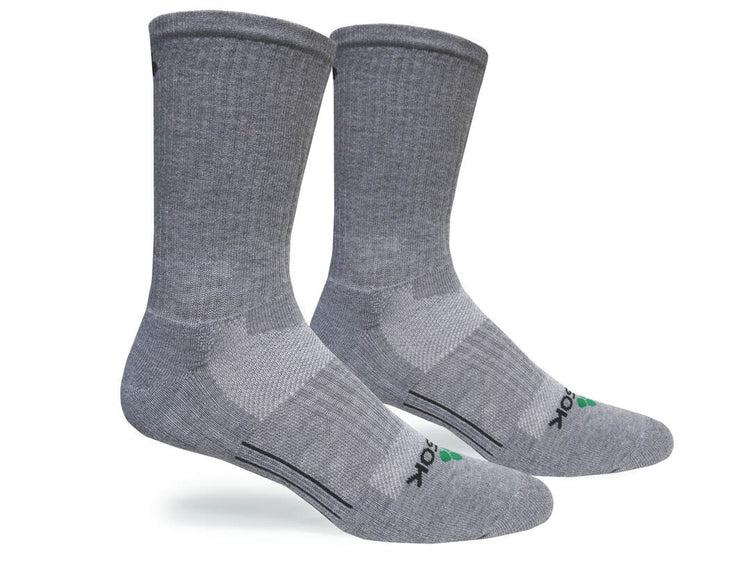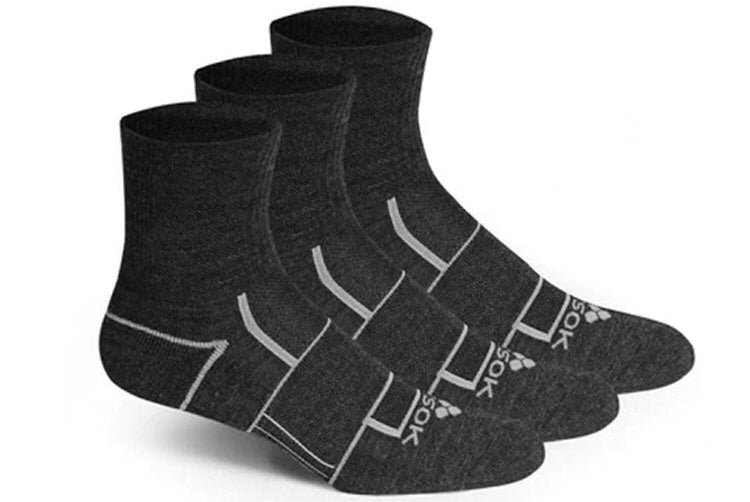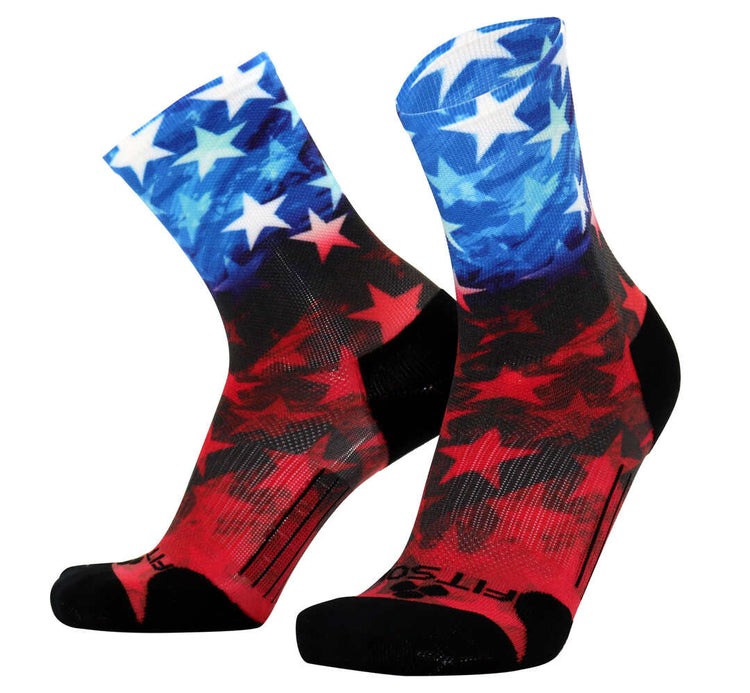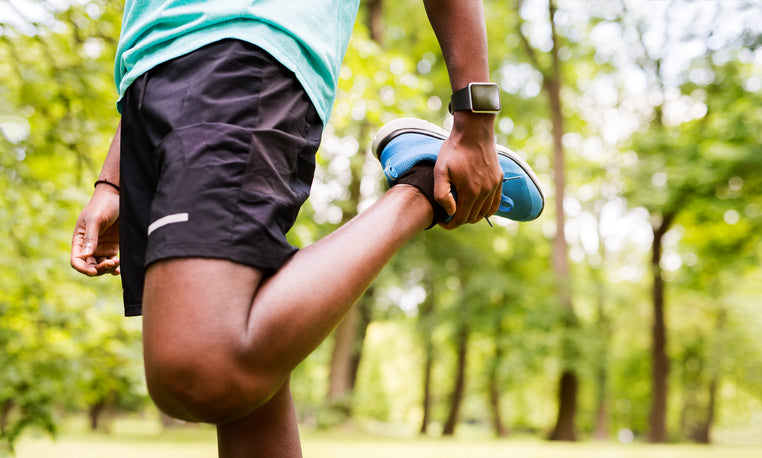Many people dedicate separate days to cardio and strength training, but is there a way you can save time by combining the two? Both weight training and running are excellent workouts that provide numerous health benefits that impact your entire body.
Strength training with weights is defined as “any physical movement in which you use your body weight or equipment to build muscle mass, strength, and endurance” (1). Besides making you stronger, weight training offers a list of benefits that improve athletic performance and overall health. The increase in muscle mass resulting from weight training allows you to burn more calories at rest, boosting your Basal Metabolic Rate (BMR) as muscles are more metabolically efficient than fat. In return, you can appear leaner and lose abdominal fat, which is associated with chronic disease. Strength training also lowers your risk of injury, improves heart health, manages blood sugar levels, and more.
Whether a sprinter or an endurance runner, you will likely experience some of the same benefits that strength trainers experience. Running of all types builds stronger bones, conditions and tones muscles, improves cardiovascular health, and helps maintain healthy body weight. On top of the physical benefits, running lowers cortisol levels in the brain, reducing stress (2).
So combining running and weights would lead to a killer workout, right? It absolutely can! Research shows that running with weights offers some unique benefits, but it also comes with a list of warnings that could potentially adversely affect your training. In a routine that includes running and weights, it is crucial to remember the safety risks to get the most out of your workout.
Benefits of Running with Weights:
Experienced and new runners alike can enjoy the benefits of adding weights to your runs. Enhancing many of the benefits of running, the careful incorporation of weights can increase efficiency and magnify your workout results.
1.) Increased Calorie Burn: Burning calories is a simple science explained by expending more energy than you consume. Adding weight to your runs means you will have to use more energy to move your body, and you’ll burn more calories. Over time, a consistent increase in calorie burn will help maintain a healthy body weight and will likely even contribute to fat loss.
2.) Increased Top Speed Potential: Added weight makes muscles work harder. This encourages the growth of muscle fiber and, over time, allows your body to adapt to the increased weight and resistance during a run. While you likely won’t see an increase in speed with the added weight, removing the weight will make the run easier and allow you to carry your body weight faster.
3.) Improved Posture: Weighted vests can help improve your running posture. Running posture affects efficiency, prevents injuries, and keeps you comfortable. If enhanced posture is a goal of yours, consider a weighted vest. Since the vest helps to distribute the extra weight evenly, it can improve posture in ways that ankle and wrist weights may not be able to do.
4.) Enhanced Bone Health: Any weight-bearing activity is good for bone health. The force of every step requires your bones to sustain your body weight. When extra weight is added to regular running, your bones are conditioned to withstand more impact. The increase in bone density will decrease your chances of developing osteoporosis and sustaining bone-related injuries.
Warnings of Running with Weights:
It’s no surprise that extra weight can increase strain on your muscles, joints, and tendons. Discomfort following the addition of weights to your workout can result in injuries or chronic pain. When incorporating strength training with running, it’s essential to heed the following warnings and pay attention to your body.
1.) Don’t Suddenly Increase Your Workout Intensity: Running with weights should be a routine that is carefully tapered up in intensity. Incorporating too much weight too quickly can lead to earlier onset of fatigue, increased risk of injury, and even an increased risk of cardiac arrest or death for people with underlying cardiac disease.
2.) Avoid Wrist and Ankle Weights: Ankle and wrist weights unevenly distribute weight to your limbs while running, which can lead to an increased risk of injury. Ankle weights require your legs to use your quadriceps, which causes a muscle imbalance because running mainly works your hamstrings. They also pull at the ankle joint, which increases your risk for tendon and ligament injuries. In the same way, wrist weights can also create an unhealthy muscle imbalance as the arms swing back and forth. Though they are great for targeted workouts, the use of wrist and ankle weights while running should be avoided (3).
3.) Avoid Wearing a Weighted Vest Heavier than Ten to Fifteen Percent of your Body Weight: A weighted vest is the best way to incorporate strength training within your run because it distributes the weight more evenly than wrist and ankle weights making it safer. Though some body-building resources promote weighted vests up to twenty percent of your body weight, this is not recommended unless you are an experienced weight trainer or have consulted with a doctor. In the same way, you would work your way up with dumbbells or other weights, a vest should add very little weight at the beginning of your new routine and slowly increase in weight over time as training intensifies. A weighted vest that is too heavy too quickly can lead to compromised form, increased risk of injury, and faster degeneration of joints.
4.) Be Wary of Joint Pain: Running is already a high-impact sport. Adding weight to your body means you are increasing the impact on your joints and bones. Over time, this added weight can lead to an increased risk of stress fractures and other injuries. The earlier onset of fatigue with added weight can compromise your form, putting you at a higher risk of falling and injury while running. In this instance, “no pain, no gain” is not the mindset you should adopt, as it is likely to result in potentially serious injuries and chronic pain. If you feel pain, remove the weights immediately to prevent further issues.
Running with weights can be an excellent way to “kill two birds with one stone” and save time during your workout routine. As long as you pay attention to the warnings and take proper precautions, running with weights can be safe, efficient, and beneficial!
Sources:
1 https://www.healthline.com/health/fitness/benefits-of-strength-training#what-it-is
2 https://www.themanual.com/fitness/benefits-of-running/
3 https://www.health.harvard.edu/staying-healthy/wearable-weights-how-they-can-help-or-hurt







Leave a comment
This site is protected by hCaptcha and the hCaptcha Privacy Policy and Terms of Service apply.